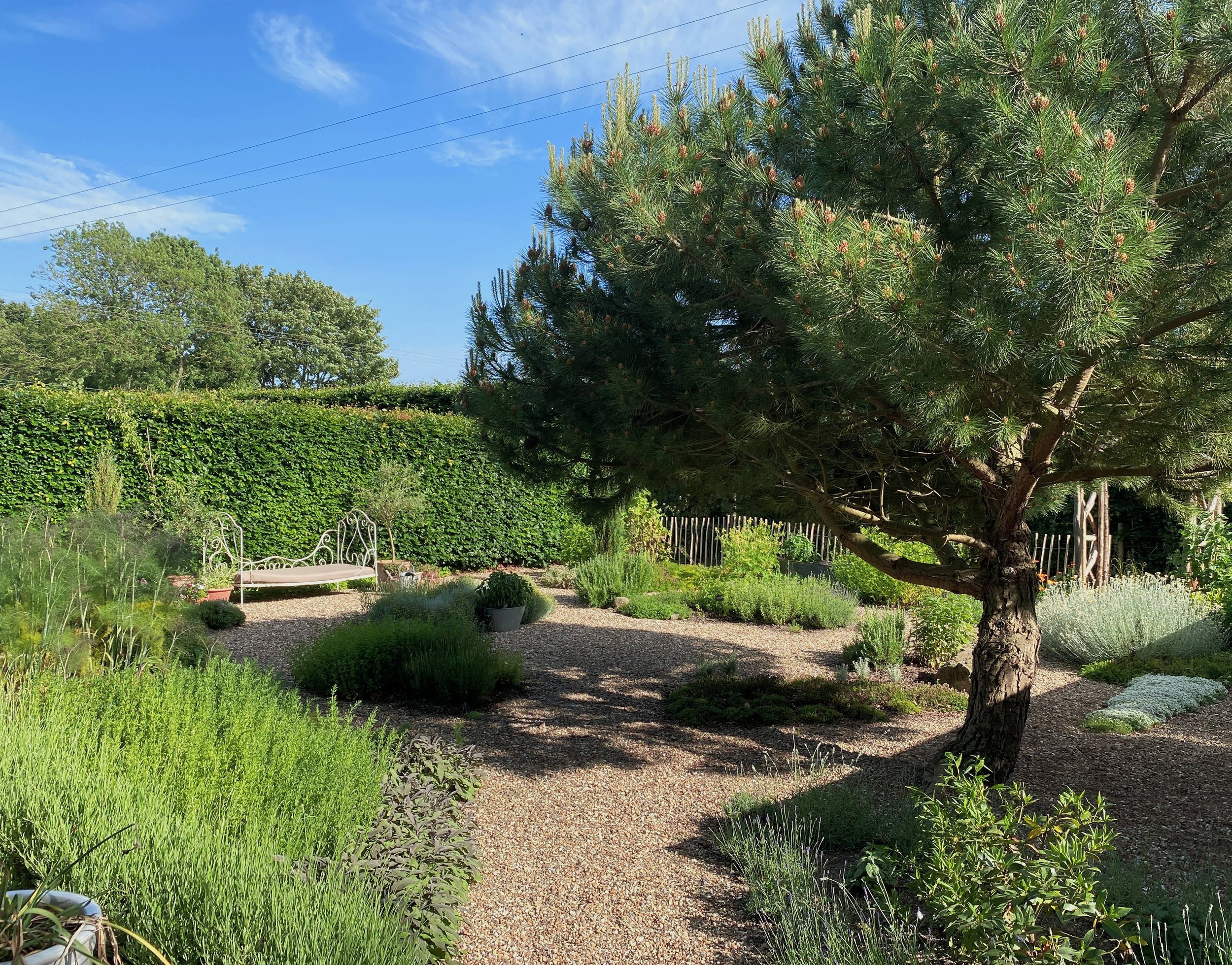Expert Guide to Gravel Gardens
The common perception of a gravel garden is simply a garden that uses gravel as a mulch over the soil (preventing weeds and keeping the soil water from evaporating). This is true but glosses over a lot of the underlying needs of the plants that create the feel of a gravel garden and indeed, a gravel garden can be so much more..
So why create a gravel garden?
The first, and most obvious reason, would be because you have a dry and free-draining soil and so, working with the prevailing conditions in your garden, you have chosen the gravel garden aesthetic. This is part of the notion of “right plant, right place” and is a forward thinking approach, dealing with the conditions you have, and creating a sustainable garden.
Alternatively you may just like that aesthetic and will instead seek to remove and replace the existing soil with a planting medium of gravel, stones, and sand - creating a low maintenance garden. Sometimes such gardens need more ongoing care as the underlying soil and subsoil may not be ideal (water retentive for example), especially if the new imported gravel-based ‘soil’ is not deep enough. I will cover this in more detail below when discussing innovative techniques (being trialled at various sites) to create more sustainably designed gravel gardens.
What does a gravel garden look like?
There will usually be grasses waving in the breeze alongside tough shrubs and perennials - from aromatic herbs, to plants well adapted to Mediterranean climates (which can give the garden a southern European character), or to plants adapted to life by the coast (allowing a ‘sea-side garden’ to be created - which often look best when they are situated close to the coast).
The most famous gravel garden in the UK is Beth Chatto’s, at her gardens in Essex (which has a thin gravel mulch over a poor, dry soil).
Tips for creating a gravel garden
- Most often a gravel garden is created and the gravel then applied as a mulch or surface dressing. As this is rarely very deep so a good tip in such cases is to apply the gravel the year after planting as this will allow you to hoe out weed seeds that germinate (as a result of turning the soil over during planting) and will therefore peep through a shallow mulch
When thinking about where a gravel garden will go, avoid any shady spots - the plants used most often will require full sun to grow well
Don’t add any compost or fertiliser as most gravel garden plants will thrive better in a soil with relatively low fertility
Consider using gravel of different sizes (but the same type and colour) - gravels commonly come in 10, 14, and 20mm sizes and you can add matching cobbles or rocks for visual interest
With regards to the type of gravel used an angular gravel packs together better and is therefore better for walking over (less expensive marine gravels are rounded and tend to roll underfoot and migrate around the space)
With regards to the grade of gravel smaller grades may encourage local cats to use your garden as a litter tray so think carefully about where your garden is sited before choosing your gravel
Do not choose a difficult to source material - locally sourced gravels often work better in their vernacular setting, blending well with your locality, but more importantly gravel gardens do require topping up occasionally and so readily available sources of gravel will make this easier
Think about weeding carefully - pulling out weeds will mix soil from their roots with the gravel around them, providing the scope for more weed growth (but that is not a reason to apply herbicides instead!)
And finally, if you have a damp soil then don’t put yourself through the stress of creating a gravel garden (and losing your precious plants) perhaps try a bog garden instead?
Some gravel garden plants…
There are many plants to choose from and plenty of resources on the web to find the right plant but here is a small selection of my personal favourites:
Stipa tenuissima - the fine and evergreen blades catch the slightest breeze
Allium cvs - ornamental bulbs in a variety of colours and sizes to add late spring structure with their floating globes
Lavandula - a perennial favourite and always happy to grow in a medium that closely resembles the stony soil of Provence
Rosmarinus (now Salvia rosmarinus) - a great evergreen structural herb (that goes well in the kitchen as well)
Salvias - the hardy varieties come in a variety of tones and staggered flowering seasons
Papaver - large or small poppies add a burst of summer colour
Euphorbia - evergreen Mediterranean stalwarts giving structure and spring freshness through their foliage and small flowers
Echinops - the globe thistle and beloved of bees
Kniphofia - not the 70’s red hot poker these are now available in a variety of colours and sizes for any space
Nepeta - a great summer plant for a burst of blue and an army of pollinating insects
Many aromatic herbs…for the keen cook and barbecue enthusiast
And also a variety of ‘sea-side’ favourites such as:
Crambe maritima - sea kale is both edible and beautiful
Centranthus ruber - abundant white or pink or red flowers that self seed freely
Eryngium - the sea holly, in blues and purples
An alternative approach to gravel gardening
Rather than working with your existing soil and using gravel to dress the surface you may instead remove the topsoil and grow the plants entirely in gravel (or recycled mineral aggregates) as this will ensure the plants which grow need minimal water and also that weeding tasks are much more straight forward (as the challenging conditions will not be right for most weed seedlings).
I have termed this as an alternative approach because unlike traditional horticultural approaches to gardening this form of gravel gardening uses novel approaches - namely adding a minimum depth of 75mm of gravel (meaning that you could also potentially lay it over existing topsoil or on heavy clay removing the need to excavate and remove tonnes of soil).
You can also choose how you want the area to look through the selection of aggregate for the gravel layer. Either you can use a consistently sized gravel (a finer grade is optimal in this instance as opposed to the larger 20mm gravel) to ensure a consistent medium in which to sow, or you can use a variety of sizes, some with sandy fine particles, to create a more naturalistic approach which provides a variety of different niches for different plants to thrive.
Such gardens are then usually established from seed. (A good example of an approach with a deep gravel planting layer can be seen at the Horniman Museum grasslands garden in London.)
This is ‘cutting edge’ horticulture though and not for the inexperienced gardener as there is no immediate blueprint for how the garden will develop and it will take time and a level of understanding to steward the garden through its early years (carefully weeding and editing plants from the gravel). It is however an exciting option for those with the space and passion to watch a gravel garden develop allowing experimentation and serendipity to lead the process of creation.


